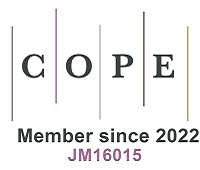Review | Open Access
Pressure-assisted crystallization techniques for high-performance metal halide perovskite devices
Views: 14
Microstructures 2025;5:[Accepted].
Author Information
Article Notes
Cite This Article
Abstract
The Pressure-assisted crystallization (PAC) technique has evolved alongside the development of metal halide perovskite materials, effectively harnessing the soft lattice characteristics of perovskites and integrating with thermal processing methods to enable the transformation of perovskite materials from fine grains into quasi-single crystals. This technique has led to significant improvements in the performance of perovskite functional devices. In recent years, a wealth of research on the PAC technique has emerged, and this paper provides a comprehensive review of these studies. The review systematically explores the role of the PAC process in perovskite materials from three key aspects: the mechanism of PAC, the effect of PAC, and the application of PAC in devices. It highlights how pressure significantly enhances the quality of perovskite films and wafers, as well as the performance of related devices, by promoting grain growth, merging grain boundaries, and eliminating voids. Finally, the paper assesses the challenges faced by PAC techniques and offers a forward-looking perspective on their future development.
Keywords
Pressure-assisted, crystallization, thermal treatment, metal halide perovskite, functional devices
Cite This Article
Yu Y, Du H, Liu Q, Pang Z. Pressure-assisted crystallization techniques for high-performance metal halide perovskite devices. Microstructures 2025;5:[Accept]. http://dx.doi.org/10.20517/microstructures.2024.144
Copyright
© The Author(s) 2025. Open Access This article is licensed under a Creative Commons Attribution 4.0 International License (https://creativecommons.org/licenses/by/4.0/), which permits unrestricted use, sharing, adaptation, distribution and reproduction in any medium or format, for any purpose, even commercially, as long as you give appropriate credit to the original author(s) and the source, provide a link to the Creative Commons license, and indicate if changes were made.













